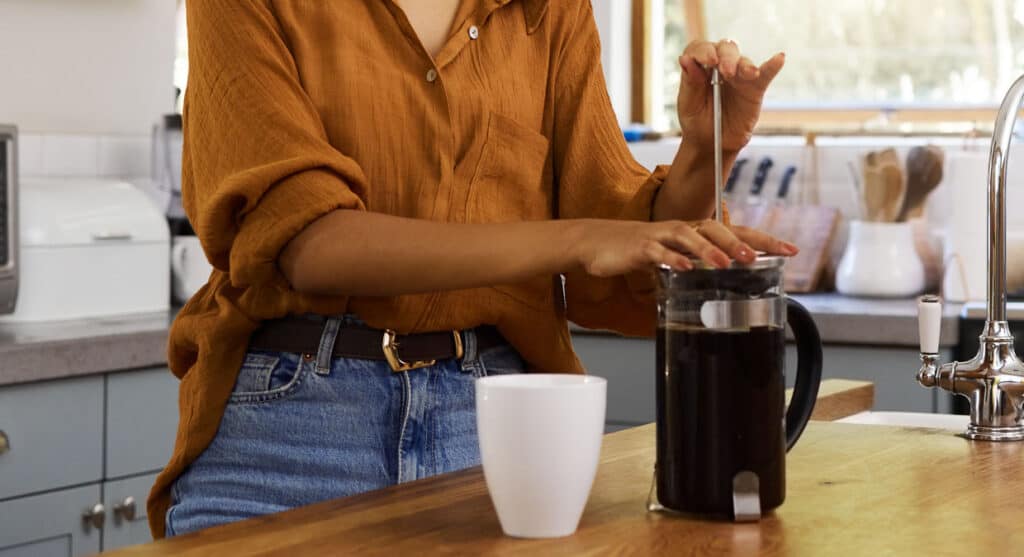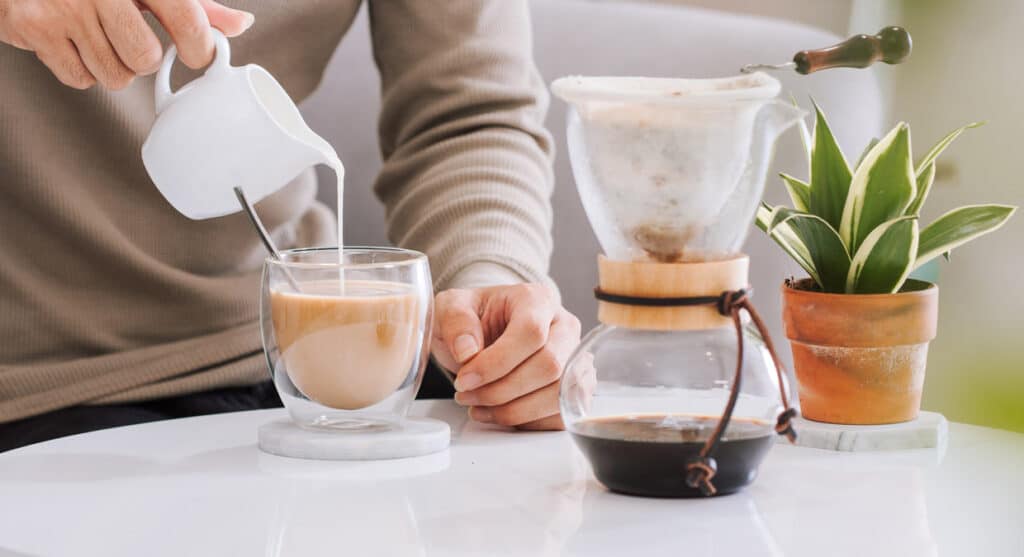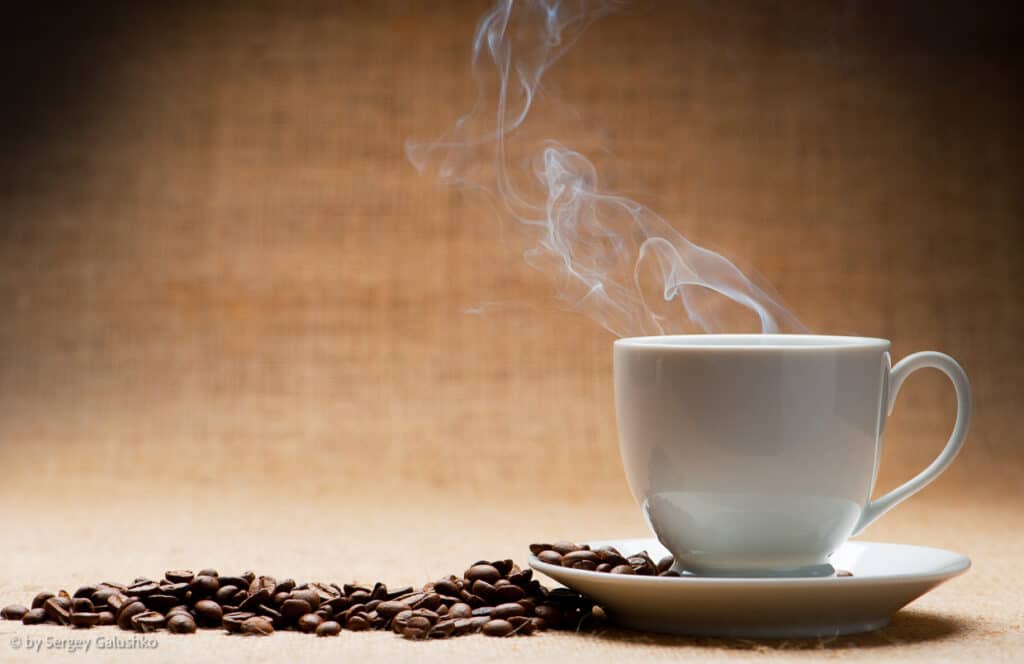When it comes to coffee, a battle rages. Which is best, French press vs. pour over coffee? These manual brewing methods produce fabulous coffee, but how do you choose which coffee brewing method is the best for you?

In this article, go on a caffeinated journey into coffee brewing, exploring the nuances between the French press and pour-over methods. By highlighting their similarities and differences, you’ll learn how to determine which technique to use for brewing your perfect cup of coffee.
The basics of French press and pour over
Before making a choice, you must understand both popular brewing methods.
French press coffee basics
The French press method is a popular immersion brewing method, where coffee grounds and hot water mix together, allowing the flavors to fully develop. After steeping for a few minutes, you use the plunger to separate the coffee grounds from the liquid, giving you a bold and robust cup.
Pour over coffee basics
The pour-over method involves pouring hot water over coffee grounds in a slow, controlled manner. The water passes through the coffee grounds and a paper or metal filter, resulting in a clean, delicate, well-balanced cup.

Taste and texture differences
When it comes to the taste and texture of your brewed coffee, there are noticeable differences between these two brew methods. With a French press, you can expect a bolder, richer flavor and a heavier body as the coffee grounds are fully immersed in water. This method also sometimes results in sediment at the bottom of your cup due to using a metal mesh filter.
On the other hand, pour-over coffee is lighter and smoother in both taste and texture. This method utilizes a paper filter, eliminating the sediment and allowing for a more delicate flavor profile. Those looking for a brighter, more nuanced cup often prefer the clean, crisp taste of pour-over coffee.
“French press is my favorite way to make coffee. I don’t have the patience to make pour over coffee. French press is simple, and I love the strong, rich coffee that gets me going in the morning. I also appreciate how eco-friendly it is and that I don’t have to buy paper filters.”
— Katie Grace, Chinchilla Corner

Brewing process comparison
The process of brewing coffee differs significantly between the French press and pour-over methods. While both ways rely on fresh ground coffee, French press coffee requires coarsely ground coffee, while pour over uses a medium-fine grind size.
French press coffee has a steeping time of 4 to 6 minutes, during which the coffee grounds are fully submerged in the water. When making pour over coffee, the grounds are never fully submerged, as the water is slowly poured over the grounds.
Another critical difference is that French press coffee uses a metal mesh filter, while pour over coffee uses a paper filter. A paper coffee filter absorbs more coffee oils, contributing to the brighter taste of pour over coffee. A metal filter reduces waste but requires more effort to wash and reuse.
| French press | Pour over | |
| Grind | Coarser | Medium to fine |
| Immersion | Full | Not full |
| Brew time | 4 to 6 minutes steeping | 3 to 4 minutes pouring |
| Filter | Metal mesh | Paper |
Ease of use comparisons
For ease of use, French press is a more straightforward method with fewer variables. You only need to combine coffee grounds and hot water, then wait for the appropriate steeping time before plunging.
Pour over requires more skill, as it involves controlling water temperature, pour rate and brewing time. It requires more hands-on time and attention to detail. It is also usually used to make a single cup of coffee, making it less convenient in a household with multiple coffee drinkers.
Cost comparison
The cost of these two coffee brewing methods is similar, and both are much less expensive than buying a fancy coffee machine. Both ways work best when you buy a coffee grinder.
A French press is easy to find, and simple ones can cost as little as $15. A pour over coffee maker is also inexpensive, with simple ones costing about $20.
For pour over coffee, you will need to buy paper filters and probably want to invest in a gooseneck kettle. So, over time, pour over coffee will cost more, but the price will still be relatively low.
“Pour over coffee will always be superior to French press, mainly because the slow process creates a rich, full-bodied coffee while also removing the grit left behind by a French press’s filter. Creating a proper pour over coffee is a ritual that cannot be rushed, but it’s largely hands-off, making it easy to fit into my morning routine.”
— Renee N Gardner, Renee Nicole’s Kitchen

Choosing the best method
There is no correct answer for choosing between French press and pour over coffee since it comes down to personal taste and lifestyle.
Here are some great reasons to choose French press coffee.
- You prefer a bolder, richer taste with some natural oils from the coffee beans.
- You frequently want to make multiple cups of coffee at a time.
- You are rushed in the mornings and don’t want to spend time slowly pouring water.
On the other hand, these are the most compelling reasons to choose pour over coffee.
- You like a cleaner, smoother cup of coffee and want to avoid sediment in the bottom of your cup.
- You frequently make a single cup of coffee.
- You are a coffee lover who likes experimenting with flavors and wants total control over brewing.
- You enjoy the ritual of pouring the water slowly over the coffee and find the process relaxing and enjoyable.
Summing up
Ultimately, there is no correct answer regarding French press vs. pour over coffee. Coffee lovers can agree to disagree since it depends on personal preferences. Experiment with both methods to discover which makes the perfect cup of coffee for you. Ultimately, the best coffee brewing technique for you is the one that brings the most pleasure and satisfaction to your daily coffee routine.
Anne Jolly is the creator of the food blog Upstate Ramblings. She loves to cook with gadgets like an air fryer, sous vide or pressure cooker. In her free time, she enjoys hiking, reading, knitting and spending time with her three kids.